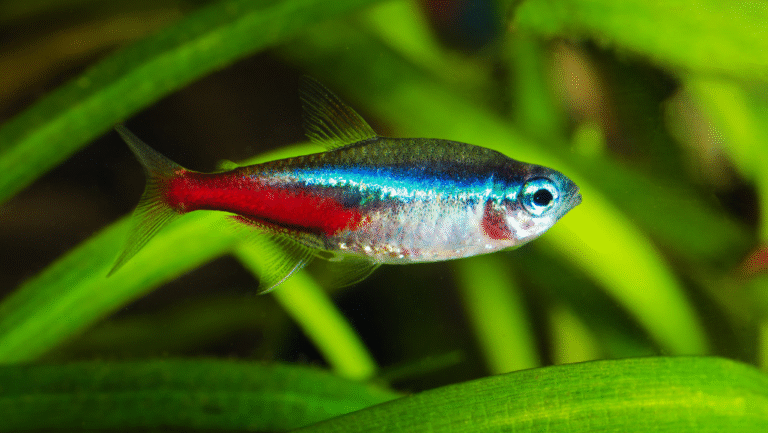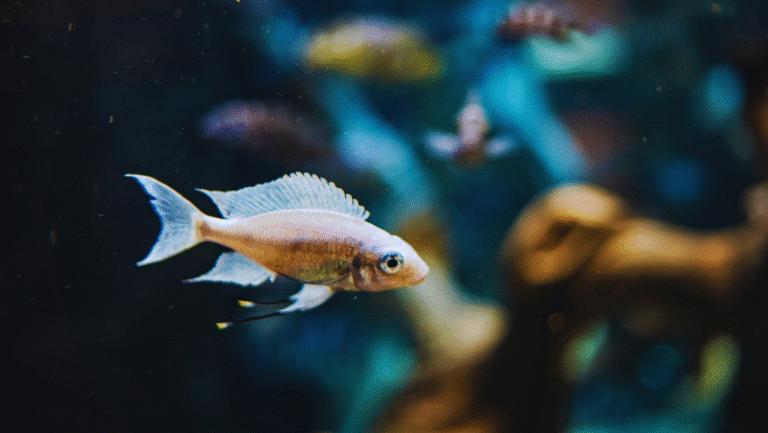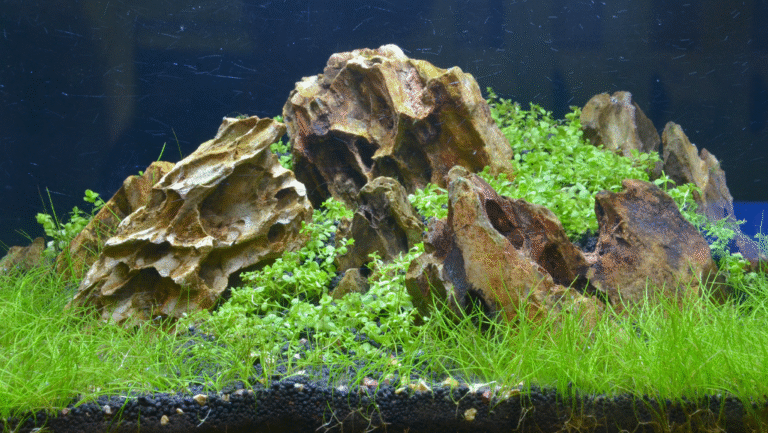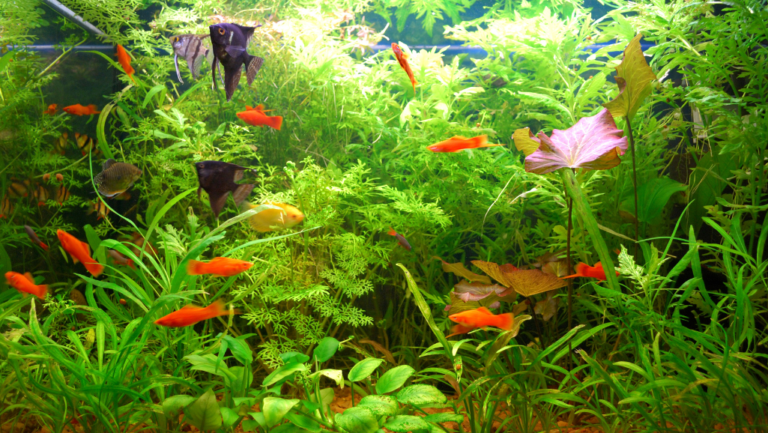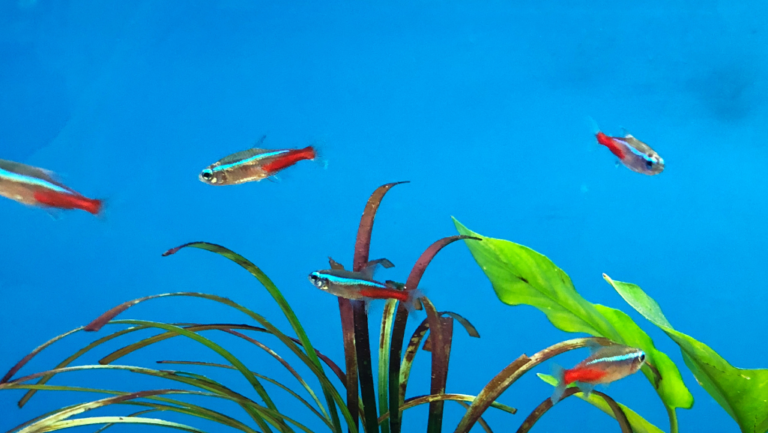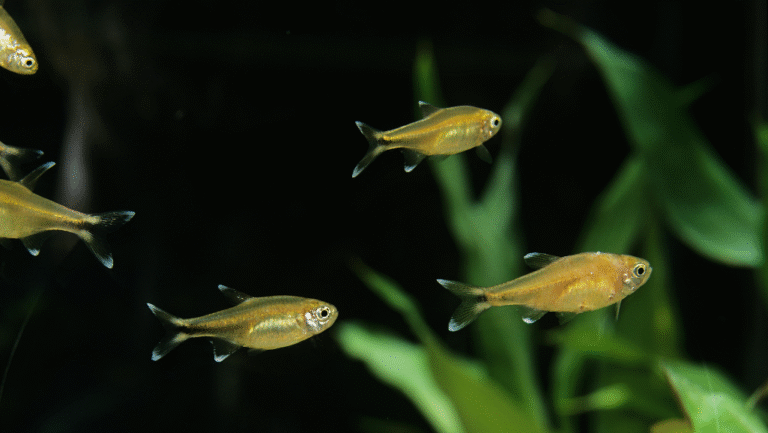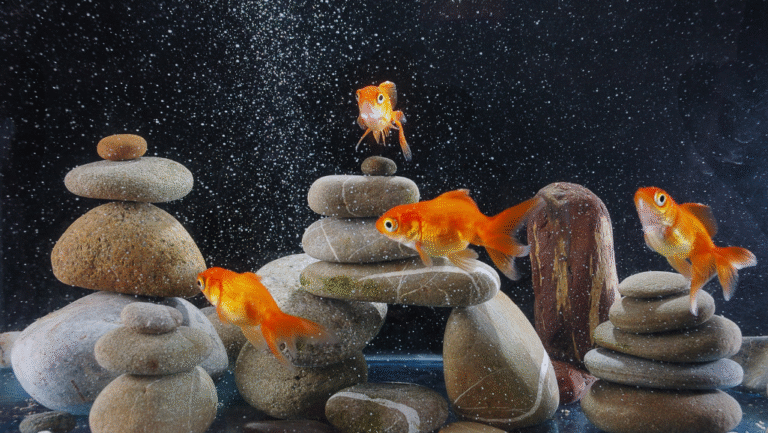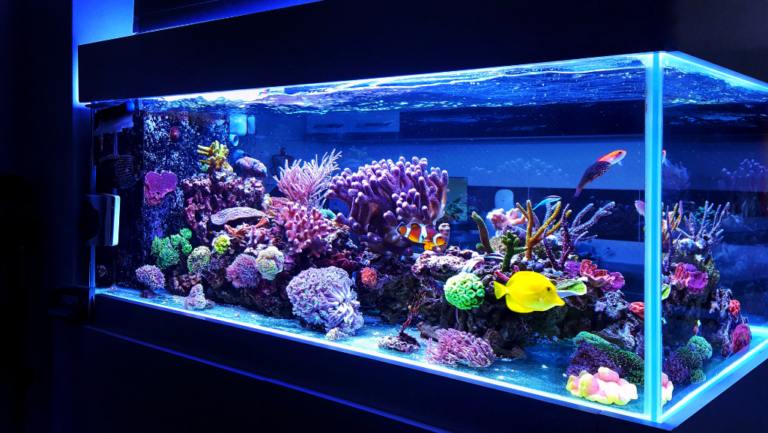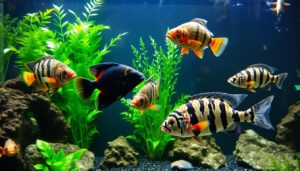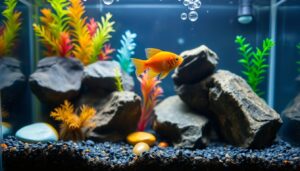Starting your first aquarium is exciting and rewarding. It’s perfect for beginners or those curious about fishkeeping. This guide will help you set up a thriving aquarium.
Before you start, it’s important to know what makes a good aquarium. You need to pick the right size and location. Also, choose the right equipment and understand the nitrogen cycle. Each step is crucial for a healthy aquarium.
This guide will cover everything you need to know. We’ll talk about choosing the right aquarium kit and the importance of patience. We’ll help you create a thriving underwater world.
Key Takeaways
- Choose the right aquarium size and location based on available space and accessibility
- Invest in essential equipment such as filtration systems, heaters, and lighting
- Understand the nitrogen cycle and its role in maintaining a healthy aquarium
- Follow a step-by-step approach when setting up your aquarium, including substrate and decoration placement
- Be patient during the cycling process to establish beneficial bacteria before introducing fish
- Select compatible fish species suitable for beginner aquariums
- Maintain regular water changes and monitor water quality for a thriving aquatic environment
Choosing the Right Aquarium Size and Location
Setting up your first fish tanks for beginners is a big decision. You need to pick the right size and place for your tank. These choices are key to a happy and healthy aquarium.
Factors to Consider When Selecting Aquarium Size
Starting with a small tank might seem appealing. But, think about your fish’s growth. Goldfish, for example, can grow from 1″ to 12″ as adults. This shows why choosing the right size is important.
Larger tanks are better for several reasons. They keep water conditions stable and dilute pollutants. This helps your fish stay healthy and your tank thrive.
When picking a tank size, remember a few things:
- How much space you have at home
- What you can afford for equipment and upkeep
- The type and number of fish you want
- How easy it is to take care of the tank
For your first tank, aim for at least 20 gallons (80 liters). Bigger tanks are more stable and need less care. They’re perfect for beginners.
“Bigger is better when it comes to aquariums. Not only do fish thrive in larger spaces, but it also allows for more creative aquascaping and a diverse community of aquatic life.”
Ideal Locations for Your Beginner Aquarium
After picking the right size, find a good spot for your tank. Aquariums are heavy, so make sure the floor can handle the weight. A 55-gallon tank, for example, can weigh a lot.
When picking a spot for your low-maintenance aquariums, think about these:
- Avoid direct sunlight and heat sources to prevent algae and temperature issues.
- Place it near outlets and a water source for easy upkeep.
- Make sure the surface is level and sturdy to avoid accidents.
By choosing the right size and location for your beginner aquarium, you’re setting up for success. Enjoy your fishkeeping journey!
Essential Equipment for Your Beginner Aquarium
Setting up a beginner aquarium needs key equipment for a healthy home for your fish. It’s important to get good equipment to keep the water right and make a comfy place for your fish. Let’s look at the main things you’ll need for your aquarium.
Filtration Systems for Beginner Aquariums
A good filter is crucial for a healthy aquarium. Filters clean the water by removing dirt, waste, and bad stuff. For a 20-gallon tank, pick a filter that can handle 60-100 gallons per hour. Make sure the filter can move the water in your tank at least 3 to 5 times an hour.
Heating and Lighting Requirements
Keeping the water at a stable temperature is key for your fish’s health. An aquarium heater keeps the water at a good temperature. Choose a heater based on your tank’s size. A 30-watt heater is good for a 10-gallon tank. Most fish like water between 74 to 77 degrees Fahrenheit.
Good lighting makes your aquarium look great and helps plants grow. Fluorescent lights are a good choice for beginners. They don’t get too hot and are good for plants and seeing your fish.
Substrate, Decorations, and Other Accessories
Setting up a natural home for your fish is fun. Use gravel or sand as the bottom layer. Use about 1 pound of gravel for every gallon of water.
Add decorations like rocks, driftwood, and plants to make your aquarium look nice. These decorations also give your fish places to hide and play, which helps them feel less stressed.
Other important things for your aquarium include:
- Water testing kits to check the water’s health
- A thermometer to watch the water temperature
- Water conditioner to make tap water safe for your fish
- A gravel vacuum for cleaning the bottom
Getting good equipment and accessories from the start helps you succeed with your beginner aquarium.
Understanding the Nitrogen Cycle in Aquariums
As a new aquarium owner, it’s key to understand the aquarium nitrogen cycle. This cycle is vital for a healthy home for your fish and plants. It breaks down fish waste and organic matter into safe compounds.
The cycle can take weeks to months to start. It’s important to check the water often. The goal is to keep ammonia and nitrites at 0 ppm, with nitrates below 40 ppm.
To speed up the cycle, try these tips:
- Add live nitrifying bacteria or use filter media from an established aquarium
- Avoid overfeeding your fish to minimize waste production
- Perform regular partial water changes, not exceeding 20% of the total volume
A common mistake is thinking bigger filters mean more bacteria. But, these bacteria also grow on surfaces like gravel and glass walls.
When your tank is “cycled,” it can handle waste better. But, adding too many fish at once can stress the bacteria. It takes up to three months for a new tank to fully process waste.
Even “cleaner fish” like catfish can raise nitrite levels. Nitrates come from breaking down animal proteins. While tropical fish can handle some nitrates, it’s wise to keep levels low. Adding plants can help lower nitrates in a balanced tank.
Setting Up Your Beginner Aquarium Step-by-Step
Setting up your first aquarium is exciting and rewarding. This guide will help you create a thriving underwater world for your fish. Follow these steps for a successful setup and to care for your aquarium well.
Preparing the Aquarium and Equipment
Start by getting all the equipment you need for your aquarium. A 10-gallon tank is great for beginners, offering space for many fish. Glass tanks are cheaper and less likely to scratch, while acrylic tanks are stronger and better at keeping temperature.
Next, set up your filter, heater, and lights. Beginners should use a sponge filter for its gentle flow. Most fish like temperatures between 74-80°F, so pick a heater that matches. If you want plants, get an LED light for them.
Adding Substrate and Decorations
Rinse your substrate, like gravel or sand, in water to avoid clouding. Place it in the tank, sloping it from back to front for a natural look. Arrange decorations and plants to make your tank look good and work well. Rinse decorations well before putting them in.
“Creating a visually stunning aquarium is just as important as ensuring the health and well-being of your fish. Take your time when arranging your substrate and decorations to achieve the perfect underwater landscape.”
Filling the Aquarium and Installing Equipment
Fill your tank with room temperature water until it’s about one-third full. Use a conditioner to remove chlorine and chloramines from the water. Keep filling, making sure your heater and filter are covered.
After filling, plug in your equipment and let it run for 24 hours. This lets you check everything is working and the water is right. Use a test kit to check pH and hardness, adjusting as needed for your fish.
Remember, patience is key when setting up your beginner aquarium. Let your tank cycle and establish beneficial bacteria before adding fish. This ensures a healthy home for your aquatic pets.
Cycling Your New Aquarium: Establishing Beneficial Bacteria
Setting up a new aquarium is exciting, but cycling the tank is crucial. This step helps create beneficial bacteria. These bacteria turn harmful ammonia and nitrite into safer nitrate. Cycling can take 2-6 weeks, depending on tank size, temperature, and pH.
Before adding fish, the water should show little to no ammonia, nitrite, and nitrate. As cycling starts, ammonia might rise to 0.5-1ppm. This is when nitrifying bacteria grow, changing ammonia to nitrite. It’s important to test the water often and watch ammonia and nitrite levels.
Methods for Cycling a New Aquarium
There are a few ways to cycle a new aquarium:
- Fishless cycling: This method uses pure ammonia to grow bacteria without harming fish. It’s faster, taking about 20 days with seeding material.
- Adding live plants: Plants help absorb ammonia and nitrate, aiding in bacterial growth.
- Using bacterial additives: Products like AF Bio Sand can speed up cycling in both fresh and saltwater tanks.
Monitoring Water Parameters During Cycling
It’s vital to check water parameters often with a good test kit, like the API Master Test Kit. Watch ammonia, nitrite, and nitrate levels closely. If levels rise, do a 30% water change and add stress coat and quick start solutions.
Cycling is complete when you see 0ppm ammonia, 0ppm nitrite, and 5-20ppm nitrate.
Be patient when cycling your aquarium. Adding fish too early can harm them. By cycling correctly and monitoring water, you’ll create a safe home for your fish.
Selecting Compatible Fish for Your Beginner Aquarium
Setting up your first beginner aquarium means picking the right fish. With over 25,000 fish species, finding the right ones can be fun but tricky.
Choose fish that are easy to care for and get along well. Some great choices for beginners include:
- Guppies
- Neon tetras
- Zebra danios
- Cherry barbs
Best Fish Species for Beginner Aquariums
There are many fish species to choose from. Cichlids come from Africa, the Americas, and Asia. Cypriniforms include barbs and danios. Toothcarps are egg layers like guppies, and Labyrinth Fish include gouramis and betta.
Rainbowfish, known for their iridescent quality, come from varying habitats and can add a stunning visual appeal to your community aquarium.
Stocking Levels and Compatibility Considerations
Think about the fish’s size and your tank’s space when stocking. Add 1.5 to 2 pounds of gravel for every gallon. Also, check if the fish get along to keep your tank peaceful.
Remember, a well-planned and carefully selected mix of freshwater fish species is the foundation of a thriving and enjoyable beginner aquarium.
Acclimating and Introducing New Fish to Your Aquarium
Adding new fish to your aquarium is exciting, but it must be done right. The fish acclimation process is key to prevent shock and help them adjust. Proper acclimation can lower stress, disease, and death risks.
Think about the compatibility of the fish species before adding them. Smaller, passive fish are best for starting. Gradually add larger, more territorial fish. Rocks and plants help reduce aggression.
To introduce new fish, float the bag in the aquarium for 15-20 minutes. This lets the temperature equalize. Then, slowly add aquarium water to the bag to adjust water parameters. This slow process is vital, as even a small pH difference can be deadly.
After acclimation, release the fish gently into the aquarium. Avoid adding water from the bag to prevent disease. Add fish in small groups to not overload the biofilter.
Keeping water conditions stable is crucial for a healthy aquarium. Regular water changes of 25% or more per month help. Feeding the aquarium before introducing new fish can also reduce aggression.
Watch your new fish closely for signs of stress and aggression. Proper acclimation and introduction ensure a happy aquarium community.
Maintaining Your Beginner Aquarium
To keep your beginner aquarium healthy, you need to do regular aquarium maintenance. A routine for water changes, filter upkeep, and watching fish health is key. This helps keep your aquatic pets happy and healthy.
Regular Water Changes and Maintenance Tasks
Change 25% of the water every two to four weeks to keep it clean. Use a gravel vacuum to clear out debris and waste. Make sure to handle the aquarium carefully, as it’s heavy.
Cleaning Filters and Other Equipment
Clean filters and other gear every two to four weeks, as the maker suggests. Be gentle with the beneficial bacteria in the filter media. Changing filter cartridges and doing water changes are key to a healthy aquarium.
“The key to successful aquarium keeping is consistency in maintenance and care.”
Monitoring Water Quality and Fish Health
Check water quality with test kits often. Make sure temperature, pH, and other levels are right. Most tropical fish like water between 75° and 80°F, best at 78°F.
Watch your fish every day for signs of stress or illness. This helps keep them healthy and happy.
- Limit aquarium lighting to 7 to 10 hours a day to stop algae.
- Feed fish twice a day, only what they eat in five minutes.
- Introduce fish slowly over four to six weeks to adjust to the aquarium.
By sticking to these maintenance tips and watching your fish’s needs, you’ll have a thriving aquarium. It will bring joy for years to come.
Common Mistakes to Avoid in Beginner Aquariums
Setting up your first beginner aquarium is exciting. But, knowing common mistakes is key to avoid fish tank problems. By avoiding these mistakes, you can make a great home for your fish.
Overcrowding and Overstocking
One big mistake is overcrowding the tank. Beginners should start with tanks over 20 gallons. This makes it easier to keep the water clean. A good rule is to have one inch of fish per gallon of water.
Overstocking can cause water quality to drop, stress fish, and lead to aggression. It’s better to start small and add more fish later.
Overfeeding and Poor Water Quality
Another common mistake is overfeeding. This creates too much waste and can harm the fish. Fish usually eat as much as they can in five minutes.
Feed them once a day at first, then twice once the tank is cycled. Also, make sure your filter is strong enough. It should filter all the tank water at least three times an hour.
Incompatible Fish Species and Aggression
Choosing the wrong fish species can cause problems. Before adding fish, research them well to make sure they get along. Some fish need different water conditions or can’t live with others.
By picking the right fish and keeping the tank balanced, you can avoid aggression. This makes for a peaceful aquarium.
To avoid these mistakes, check the water often, change it weekly, and keep the right number of fish. Being informed and proactive helps you have a healthy, thriving aquarium.
Troubleshooting Common Issues in Beginner Aquariums
Starting an aquarium can be challenging. You might face problems like algae, cloudy water, and fish diseases. Knowing the causes and how to fix them can help your fish thrive.
Algae overgrowth is a common problem. It happens when there’s too much light or nutrients. To fix it, cut down on lighting and reduce nutrients. Adding algae-eating fish or shrimp can also help.
Cloudy water is another issue. It often means there’s too much bacteria from ammonia. To clear it up, don’t overfeed and make sure your filter works well.
“Prevention is key when it comes to maintaining a healthy aquarium. Regular water changes, proper feeding, and monitoring water parameters can help avoid many common issues.” – Dr. John Smith, Aquarium Expert
Fish diseases can be prevented too. Keep water quality good, quarantine new fish, and treat illness quickly. White or tan worms mean poor water quality. To avoid this, feed fish only what they can eat in five minutes and clean the tank regularly.
Being proactive in fixing aquarium problems is important. Stay informed and create a healthy home for your fish. Research fish species, avoid overcrowding, and test water often to catch issues early.
Conclusion
Setting up a successful beginner aquarium is a rewarding journey. It needs patience, research, and dedication. By choosing quality equipment and understanding the nitrogen cycle, you can create a thriving underwater world.
As you start your fishkeeping hobby, be open to learning and making mistakes. Join the aquarium community and seek advice from experts. Keep learning from books, magazines, and online resources. With time, you’ll get better at keeping your aquarium healthy and vibrant.
Enjoying the journey is key to success in this hobby. Take pride in your aquarium and the peace it brings. As you grow, you might want to try more advanced things like breeding or creating complex aquascapes. The possibilities are endless, and the rewards are huge.





